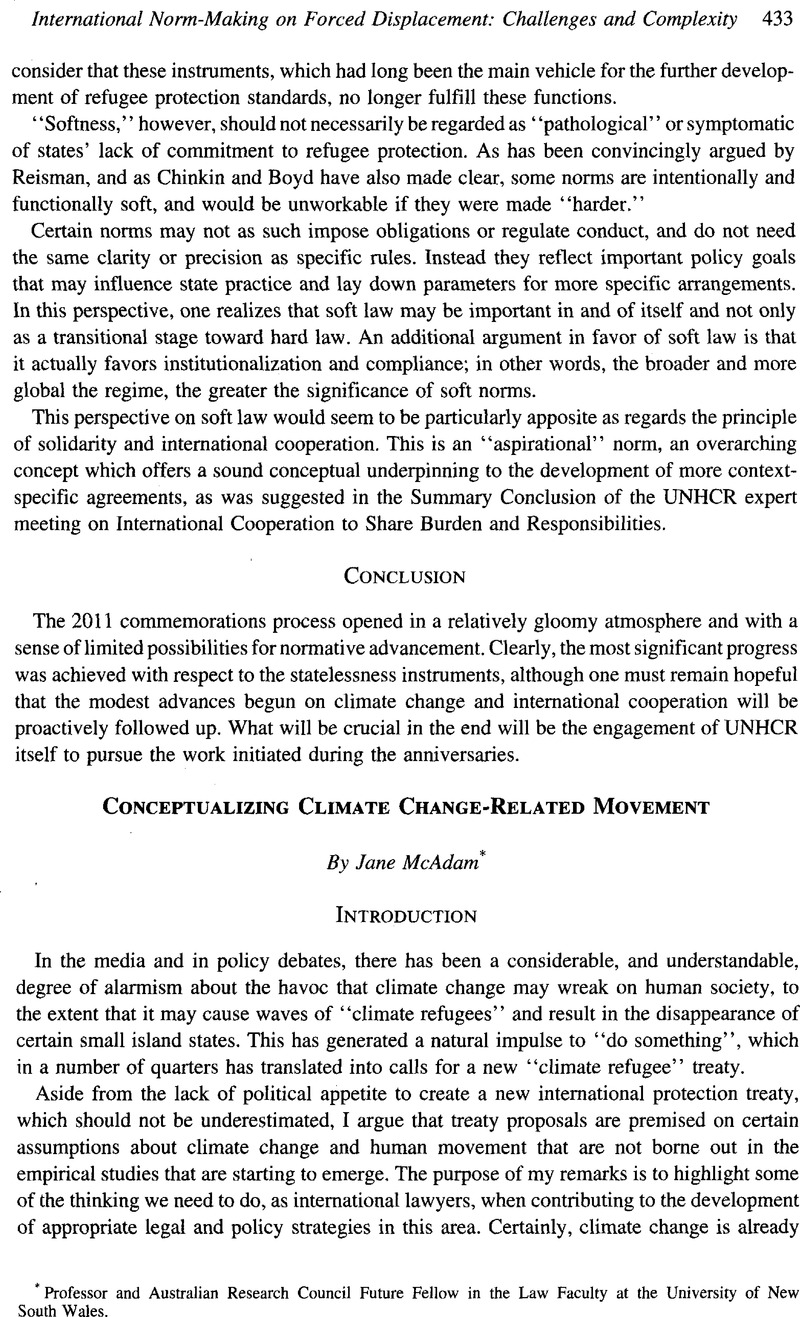Article contents
Conceptualizing Climate Change-Related Movement
Published online by Cambridge University Press: 28 February 2017
Abstract

- Type
- International Norm-Making on Forced Displacement: Challenges and Complexity
- Information
- Copyright
- Copyright © American Society of International Law 2012
References
1 Abrar, Chowdhury Rafiqul & Azad, S. Nurullah, Coping with Displacement: Riverbank Erosion in North-West Bangladesh 113 (2004)Google Scholar.
2 These drivers are not presently recognized as giving rise to refugee status unless they amount to persecution for reasons of a claimant’s race, religion, nationality, political opinion, or membership in a particular social group. In other words, They have a differential impact on the claimant because of his or her marginalization.
3 See Betts, Alexander & Kaytaz, Esra, National and International Responses to the Zimbabwean Exodus: Implications for the Refugee Protection Regime (New Issues in Refugee Research, Research Paper No. 175) (2009)Google Scholar, at http://www.UNHCR.org/4a76fc8a9.html.
4 See, e.g., Christian Aid, Human Tide: the Real Migration Crisis (2007), available at http://www.christianaid.org.uk/images/human-tide.pdf.
5 For example, There is some discussion that the sinking of the Carteret Islands is not being caused by sea-level rise attributable to climate change, but rather to subsidence. Campbell, John, Climate-Induced Community Relocation in the Pacific: The Meaning and Importance of Land, in Climate Change and Displacement: Multidisciplinary Perspectives 68 (McAdam, Jane ed., 2010)Google Scholar.
6 See, for example, reports in 2002 that a climate change lobby group in Washington, D.C. was insisting that all Tuvaluans would evacuate the island in 2003. Connell, John, Losing Ground? Tuvalu, The Greenhouse Effect and the Garbage Can, 44 Asia Pac. Viewpoint 89, 90 (2003)CrossRefGoogle Scholar (citing Islands Business Pacific, at 10 (April 2002)).
7 The UN High Commissioner for Refugees suggests that “[a] development-oriented approach is now required in response to displacement, emphasizing the inclusion of the most vulnerable and marginalized sections of society in efforts to ensure that they benefit from the livelihoods, services and security to which they are entitled.” Guterres, Antonio, Bracing for the Flood, N.Y. Times (Dec. 10, 2009)Google Scholar, available at http://www.nytimes.eom/2009/12/11/opinion/1 liht-edguterres.html?_r=l&emc=etal. See Hurwitz remarks, supra at 2.
8 As the UN High Commissioner for Refugees has noted, given that most displacement is predicted to be internal, primary legal responsibility for ensuring people’s rights will lie with the states concerned. Id. See generally Jane McAdam, Climate Change, Forced Migration and International Law (2012).
9 Barnett, Jon & Campbell, John, Climate Change and Small Island States: Power, Knowledge and the South Pacific 10 (2010)Google Scholar (citing data compiled by the World Resources Institute Climate Analysis Indicators Tool, http://cait.wri.org).
- 1
- Cited by


